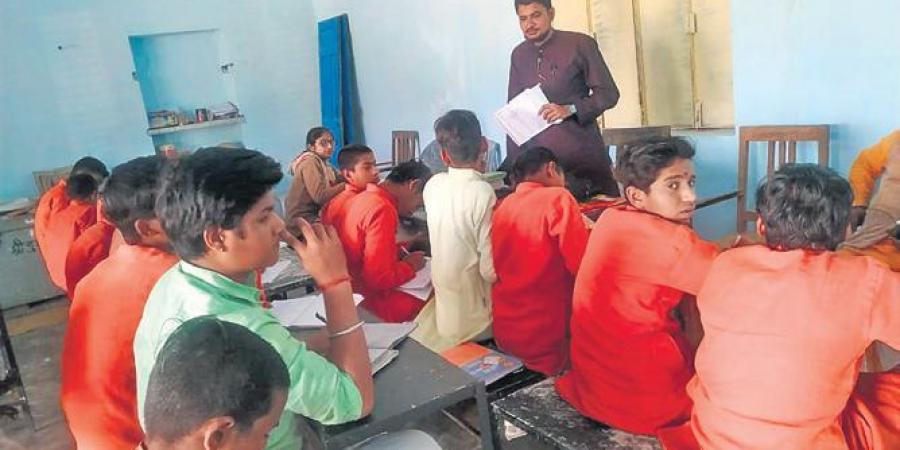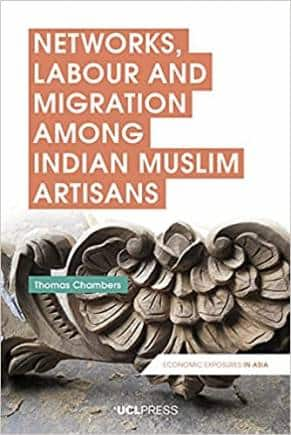Mahoba Village (Bundelkhand), UTTAR PRADESH :
Free online Sanskrit-speaking classes by UP is an instant hit as there is a surge in excitement about learning the ‘language of gods’.

Uttar Pradesh :
Around 25 years back, Class V student Hasan Khan would spend hours with his friends at the local Hanuman temple in his Mahoba village in UP’s Bundelkhand region, listening to the Ramayan verses. He recited the ‘chaupais’ and ‘shlokas’.
Now 35, Khan is currently on a mission to popularise Dev Bhasha (the language of gods, as Sanskrit is known) as Jan Bhasha (the language of commoners). Pursuing PhD in Sanskrit, he isn’t alone in his mission but is joined by 40 other trainers working on a dedicated project of the Uttar Pradesh Sanskrit Sansthan to break the myth of Sanskrit being a difficult, primitive and elitist language.
“Four years back, UP embarked on a dedicated mission to popularise Sanskrit, starting with government school teachers and students. Till two years back, special camps were organised across the state which enabled not only 12,000 primary teachers, but their students also to learn how to speak in Sanskrit on a daily basis. Our next plan was to establish centres in all development blocks and train at least 1,000 people in each block to speak fluently in the language,” UP Sanskrit Sansthan president Vachaspati Mishra.
The Covid pandemic came as a big obstacle. As the pandemic shows no signs of ending, the Sansthan has taken to the online medium. Free-of-cost online Sanskrit-speaking classes of 20-day duration (one hour daily) were planned and launched in the first week of this month. Aspirants were asked to give a missed call on cell-phone number 9522340003.
“We received 45,000 missed calls. All those who made the calls automatically received forms to get enrolled for our free online course being conducted in one-hour slots from morning till evening. Over 8,500 have already enrolled,” said Mishra. While 60% of those enrolled are students (from Class V students to PhD scholars), the rest are professionals, including doctors, engineers, journalists, software engineers, lawyers, teachers and even sportspersons. Among the non-students, around 30% are women, many of them housewives.
While the maximum (over 25%) of these 8,500-plus students are from UP, participants from Maharashtra are second only to UP. Madhya Pradesh, Gujarat, Karnataka, Punjab, Bihar, Delhi, Uttarakhand and Telangana too are in large numbers. Though the present duration is for only 20 days, the Sansthan is planning to follow it with virtual Sanskrit Vyakaran (Grammar) classes for those eager to delve deeper into the language. Also, the success has prompted the Sansthan to plan such courses in Pali and Prakrit languages as well.
The participants are already excited. “Since childhood, Sanskrit and not Bengali has been my third language after English and Hindi. With my father being in a transferable job, I did my schooling in Chennai where I learnt Sanskrit in Devanagiri script,” says Shantanu Ganguly, associate professor of English language at a leading college in Kolkata. “The course has given me an opportunity to refurbish my Sanskrit knowledge attained during school days. I’m eagerly waiting to pursue further courses in the Dev Bhasha and would be happy if my services are used to run similar courses in West Bengal,” he says.
Ganguly’s batchmates in the virtual classroom include Anup Singh, a national-level rifle shooter from UP. “Meditation holds the key to concentration and success in target sports such as shooting and archery. I’ve been meditating with Hindi words, but mediation with Sanskrit shlokas generates different vibes,” Singh said. “I’ve never studied Sanskrit before. The free online platform attracted me,” said Nagpur-based software engineer S R Mungatiwar.
source: http://www.newindianexpress.com / The New Indian Express / Home> The Sunday Standard / by Express News Service / August 01st, 2021










